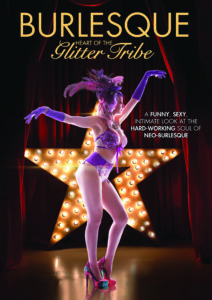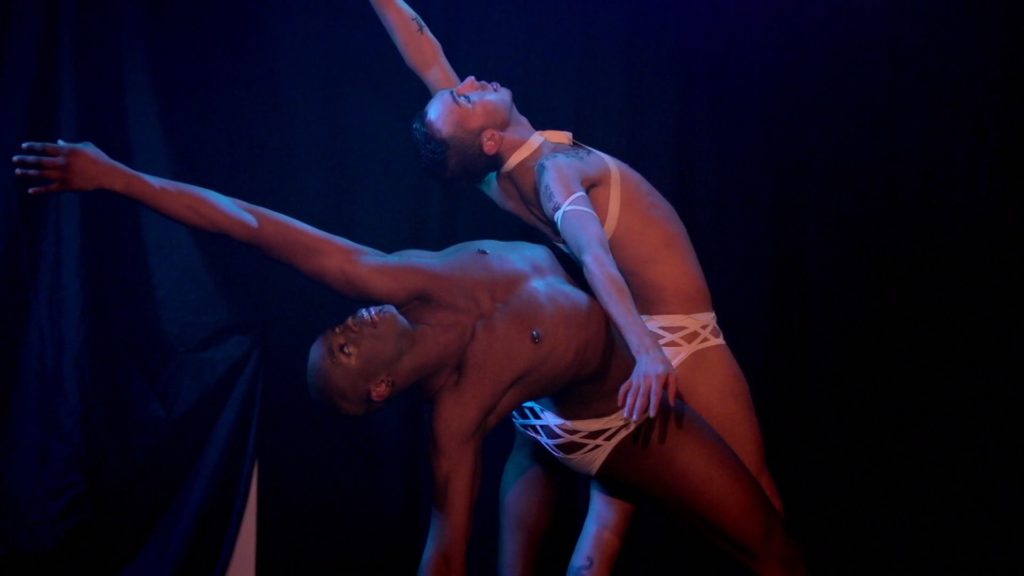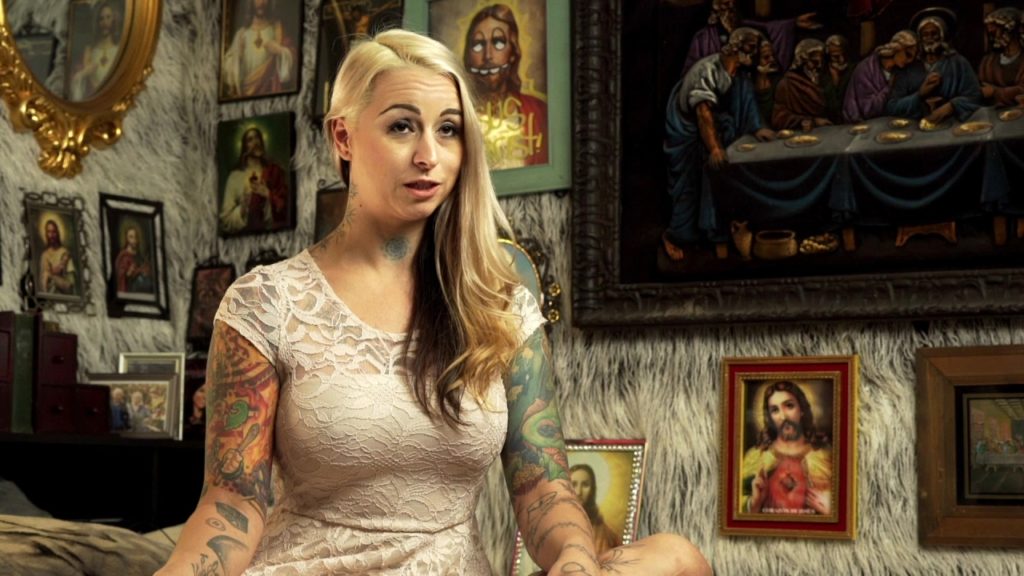Oh my Stars and Garters! And Feathers and Makeup and Sequins and Pasties and Heels…
DIRECTED BY JON MANNING/2017
DVD STREET DATE: MARCH 14, 2023/VIRGIL FILMS (via Kino Lorber)

All is well and wonderful in the land of burlesque. That’s the basic gist of the recent documentary Burlesque: Heart of the Glitter Tribe. It’s an effectual if not exactly probing look at several veteran performers, showcasing their elaborate costumes and acts. Along way, we hear all about how important burlesque has been to them, and why the art form matters so much. “The dancing and the sexy and the pretty and the funny all come together at the same time. Only burlesque does that”, one states.
It’s all just so… nice, you know? Even when one performer introduces a puppet of Jesus and proceeds to simulate, er, things with it, rookie director Jon Manning can’t quite manage to communicate edginess. And edginess must be vitally important within a live art form thrusted forward by people on stage aggressively stripping off outlandishly glamorous homemade outfits down to mere pasties and G-strings.
Perhaps it should be clarified, though, that several of the featured performers are men, some of whom share routines with each other as well as with women. While men performing in this idiom can’t help but be more of an uphill battle of acceptance for the mainstream attendee (one dancer observed that “Monty Python tells us that naked girls are sexy, but naked men are funny”), the guys featured here certainly {ahem} pull it off.

One of the film’s most effective sequences comes quite late in the film’s run time as a male and female duo verbally recap their routine backstage with all the enthusiasm of a late-in-the-day corporate strategy meeting. But then, we see them actually performing it on stage. It is undeniably erotic, charged to the hilt. In that moment, the level of professionalism these people invest in this finally becomes clear. Too bad it took most of the film to get there.
Burlesque: Heart of the Glitter Tribe stars Angelique Devil, Zora Von Pavonine, Babs Jamboree, The Stage Door Johnnies, among others. They perform regularly at a small club in a rural area and make very little if any money doing it. It’s all possible because these people can’t not do this- they are fully hooked on burlesque. Importantly, for the uninitiated, it’s explained that this is not the same as performing in a strip club. (Some participants apparently have done both). As seen in this film, burlesque audiences tend to be easily half women; showcasing oneself purely as an object of desire is not at all the point. There’s a lot of humor (some quite warped) on display, not the least of which is a girl stripping off a big goofy burrito outfit to “Weird Al” Yankovic’s “Taco Grande”. It takes all kinds, I guess.

Reading between the lines, it appears that burlesque itself is fueled more by the performers than even the very enthusiastic fans. Again and again, we’re shown plain-clothed performers alone in their crowded apartments or work rooms obsessively affixing the millionth sequin to the outfit they’re working on. As they tweak away with the fancy fabric and thread, they explain how this is a glorified hobby, not their day job. Some even say that the commitment to burlesque outweighs their commitment to their home life, their sex life, and even their marriages. All of them iterate that they’ll never get back what they put into burlesque- but that’s just part of it. If that’s the case, it means that these clubs and by extension, the patrons, are unfairly benefiting from the performers’ passion for being on stage in this capacity. Now that’s exploitation. It would’ve been great if that would’ve been deeply addressed and hashed out in the film.
As it stands, we don’t hear much from fans, and we certainly don’t hear from club owners. (The DVD has no bonus scenes or even notable extras). We only hear from one performer after another, each one innocuously profiled, shown performing, and then on to another. It gets to be rather repetitive after a time. Even when the routines get kinda dirty, the film manages to retain that safe feeling, almost as though you could comfortably watch this with your mother. (I guess that depends on you and your mother). Sorry but that can’t be in the documentary’s favor. Most if not all the featured performers make it clear that they’re doing this to express themselves creatively and personally, and to push boundaries in their orchestrated lavish acts. So then why does Burlesque: Heart of the Glitter Tribe feel so darn… nice?


